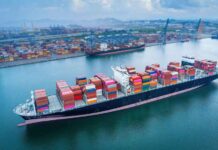The emphasis of supply chain management has changed from efficiency to resilience since the peak of the COVID-19 epidemic. Businesses realize that preparing for future disruptions will provide greater long-term returns than boosting short-term productivity at all costs. Fewer people have been able to attain this level of resilience.
One of the biggest challenges is a lack of openness. 71% of procurement professionals have little to no insight beyond their Tier 2 suppliers, and just 13% have completely mapped their supply networks. Closing this gap is the first step for companies looking to build robust supply chains. Additionally, this will offer a foundation for more effective and efficient supply networks.
How Resilience Is Guaranteed by Visibility
A key component of supply chain resilience is the ability to react quickly and efficiently to unforeseen developments. Without awareness outside a company’s direct suppliers, such detection and action are difficult. If a company is unable to recognize these changes when they happen, they will not be able to adjust in time to lessen the damage. Disruptions can originate as far upstream in the supply chain as a problem with raw materials.
Being visible involves more than just anticipating disruptions. Businesses are better able to respond to, prevent, or lessen disruptions when they have early visibility. Determining the right course of action in a given circumstance is made simpler by having access to a greater amount of information. Because of this, supply chain executives that made an investment in end-to-end visibility were twice as likely to say that they had no problems with the supply chain in 2022.
Additionally, greater openness makes it easier to identify and manage risks for long-term optimization. Agility is further increased by the technology required for this accomplishment, which also naturally enhances communication with many stakeholders.
How Supply Chain Visibility Can Be Increased
While increasing agility and risk management are not the only steps toward supply chain resilience, visibility provides a crucial basis that supports the other components of resilience. Here’s how companies may greatly increase supply chain visibility and, hence, resilience.
Chart Your Network of Multi-Tier Suppliers
Taking stock of their existing supplier networks is a good place for organizations to start. Using supply chain mapping software is the simplest and most dependable method to accomplish this.
By 2029, the market for such software is expected to reach $7 billion, and it makes sense. These automated systems provide comprehensive digital records of each transaction made along the supply chain for a product or resource. Consequently, they are able to automatically generate a traceable record of a business’s downstream partners and suppliers.
For a number of reasons, this procedure is better than manual ones. It’s faster to start. Second, automating data entry reduces the possibility of human mistake leading to inaccurate maps. Keeping everything in one location also makes future analysis simpler.
Use IoT Solutions to Increase Awareness
Real-time data should then be added to supply chains’ maps. Here, the Internet of Things (IoT) is a vital tool.
Real-time cloud uploading of shipping data, including locations, package states, and temperatures, is possible with IoT sensors. Similar technology may be used by businesses to monitor the whereabouts and upkeep of vital assets, such as vehicles, ships, and industrial equipment. They can receive automated notifications of important events like deliveries that are finished and gate-in and gate-out at distribution locations. Consequently, supply chain executives have a thorough and current understanding of their whole business.
IoT solutions have significant special cybersecurity dangers, despite their potential visibility-boosting benefits. Given that 2,769 organizations in this sector were impacted by cyberattacks in 2023, more cybersecurity safeguards are necessary. Network monitoring, encryption, and ideally zero-trust architecture must accompany any IoT deployment.
Promote Data Exchange and Reciprocity
It’s important to remember that innovations like supply chain mapping and IoT installations will only increase visibility in areas that companies can manage. The company’s partners will need to support full openness.
The leaders of the supply chain should urge the members to work together and share information with one another. It is imperative that these agreements be reciprocal since it is quite likely that other businesses will only be prepared to offer such information to organizations if they are also required to receive it. It is necessary for a manufacturer to allow access to their own Internet of Things data before being able to request such updates from a third-party logistics provider.
When everyone utilizes the same technology, these agreements are made easier. Impressively, 38% of supply chain companies have installed between 500 and 1,000 IoT devices, while 55% have already deployed over 1,000. As a result, it will be challenging to impose a single technological platform. However, by utilizing standard IoT transmission protocols and a digital supply chain network or a shared cloud solution to see the data, firms may ease collaboration. Certain systems provide advanced services that are beyond visibility and include artificial intelligence (AI), which may offer early warnings of possible problems and interruptions and even recommend strategies to address them.
These Days, Supply Chains Need Visibility
The last several years have shown how supply chains may be completely upended by a strictly lean strategy when problems occur. Instead, logistics networks need to embrace resilience, and visibility is a crucial facilitator of this. Organizations will find it difficult to streamline their processes and react to unforeseen difficulties, interruptions, and supply chain shocks in the absence of more openness.
It is difficult, but not impossible, to ensure visibility. There is much more that companies can do to increase resilience; visibility is only a means to an end. To make supply chains more flexible, robust, and shockproof, however, these three phases are essential because they provide companies with a strong base upon which to build and keep up with new innovations like control towers, digital supply chain networks, and artificial intelligence (AI) agents.

























